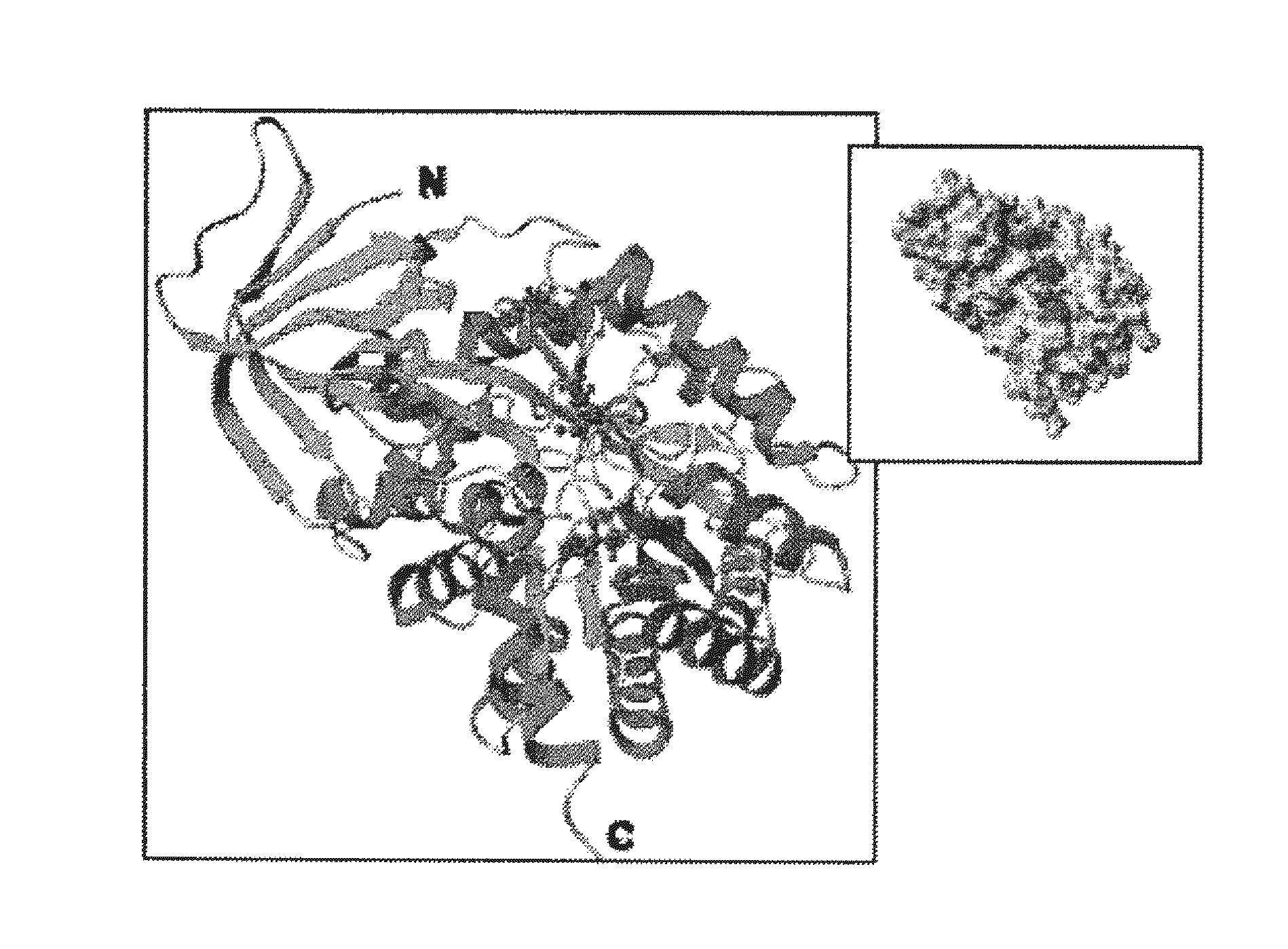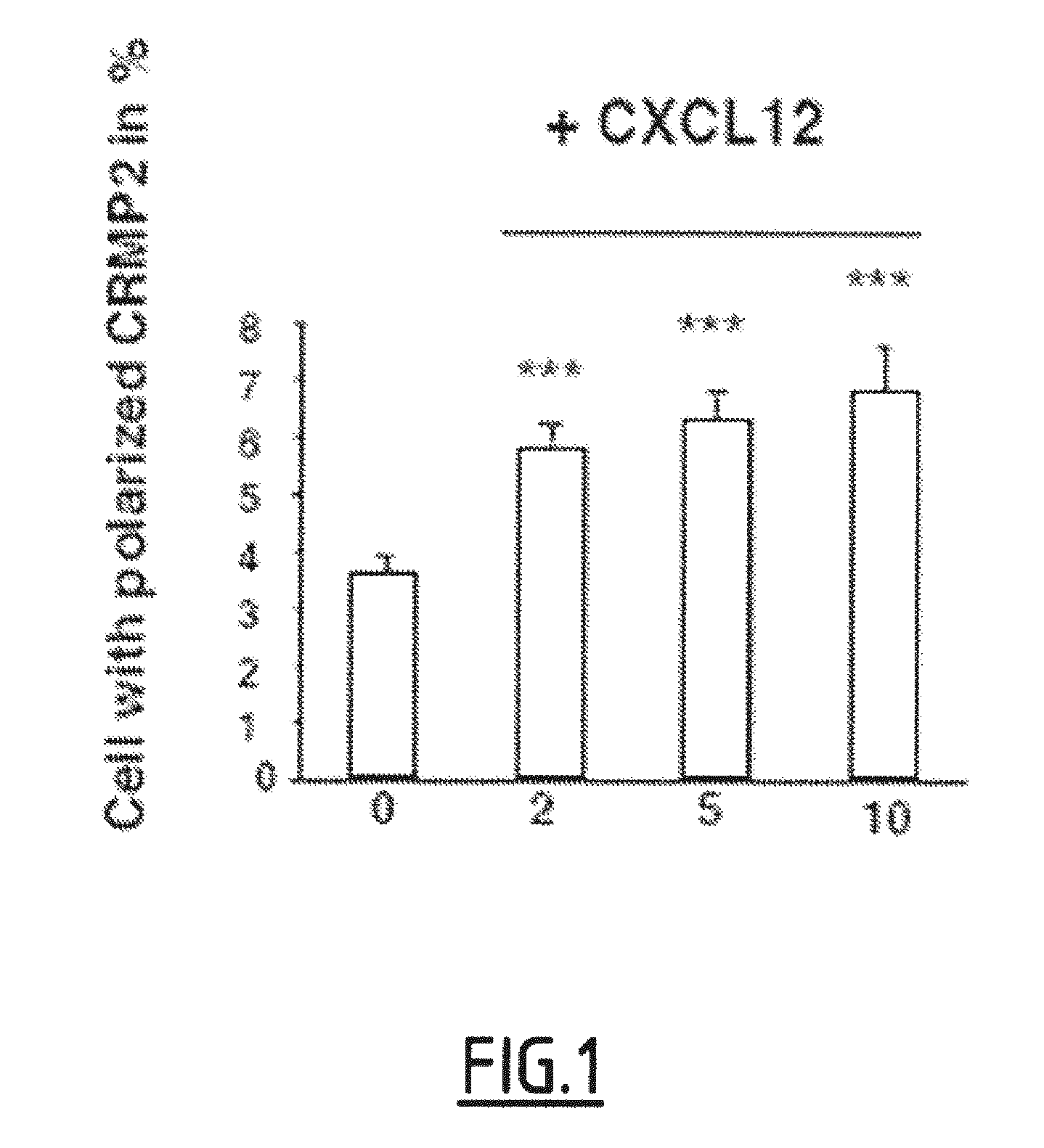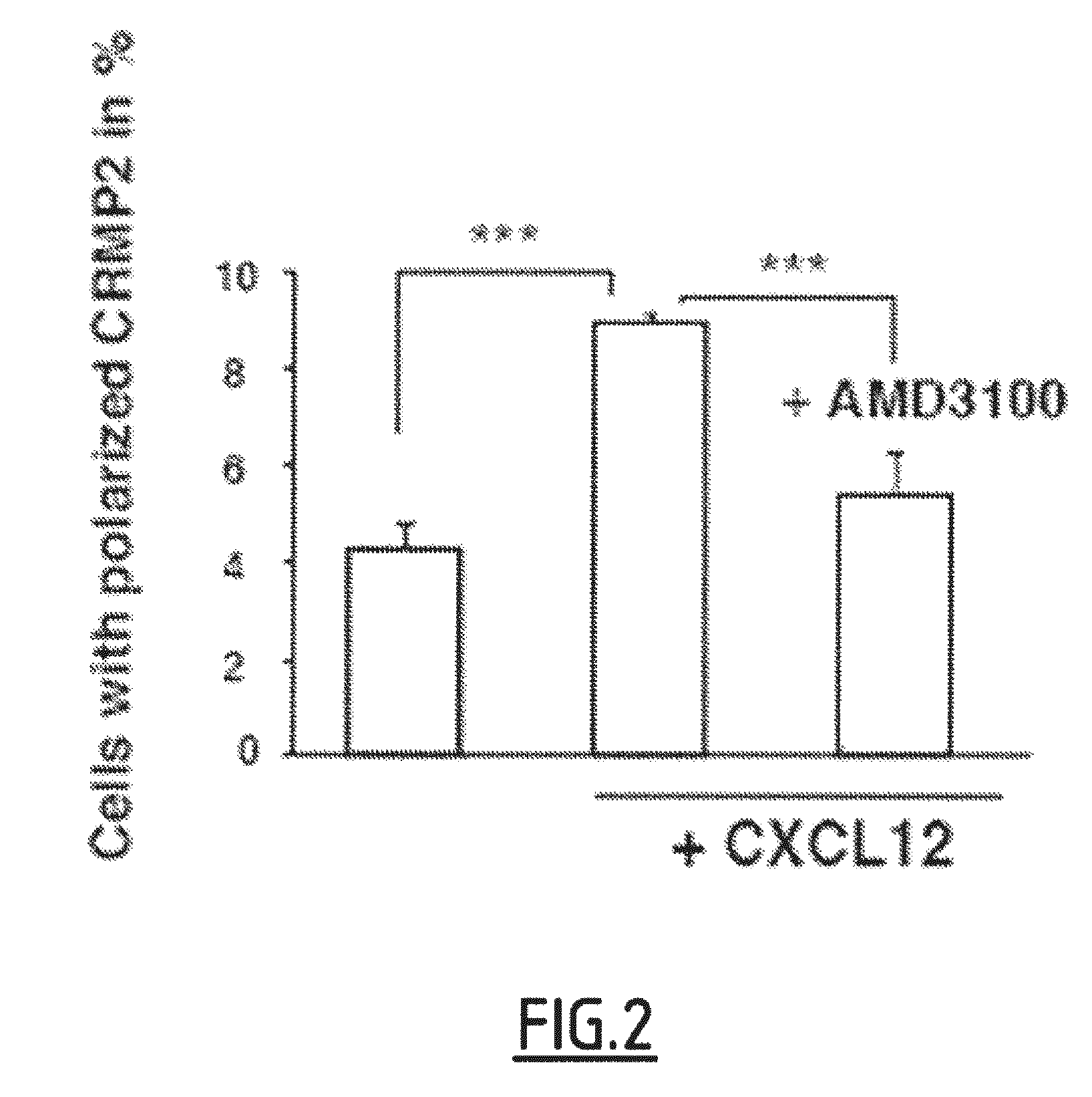Cleaved and Phosphorylated CRMP2 as Blood Marker of Inflammatory Diseases of the Central Nervous System
a phosphorylation technology, applied in the field of central nervous system inflammatory disease prediction, diagnosis and/or treatment, can solve the problems of affecting the treatment effect, so as to reduce the migration capacity of t cells, improve the treatment effect, and improve the effect of treatment
- Summary
- Abstract
- Description
- Claims
- Application Information
AI Technical Summary
Benefits of technology
Problems solved by technology
Method used
Image
Examples
example 1
[0076]The following example demonstrates that the phosphorylation of CRMP2 on tyrosine 479 residues in crucial in T cells migration.
Material and methods
Cells and Antibodies
[0077]The Jurkat T cell line was cultured in RPMI 1640 complemented with 10% fetal calf serum. Primary T lymphocytes selected from the blood of a healthy donor were cultured for one to two weeks in RPMI complemented with 10% AB human serum and IL2 (20 U / mL).
[0078]Rabbit polyclonal antibodies recognizing both full-length and cleaved CRMP2 forms have been described in Rogemond et al. (2008) J. Biol. Chem. 283:14751-14761. The peptide sequences used to generate C-ter and pep4 antisera were localized between AA557-572 and AA454-465 in the CRMP2 sequence, respectively. Antibodies were purified by affinity chromatography on the corresponding immobilized peptide. Sheep antisera recognizing CRMP2-pSer522 and CRMP2-pTyr509 / 514 were from Kinasource Limited (Dundee, UK). The rabbit polyclonal antibody produced by the invento...
example 2
[0103]The present inventors have shown that the activation of T lymphocytes mediated by TCR stimulation led to an increase in the detection of CRMP2, more particularly of the cleaved form of CRMP2, by the anti-peptide 4 antibodies described in the international application WO2003 / 022298.
[0104]Interestingly, these antibodies strongly recognized column-enriched phosphorylated forms of CRMP2. Moreover, S465-phosphorylated CRMP2 is the main phosphorylated form of CRMP2 among phosphorylated forms of CRMP2 described in the CNS.
[0105]Accordingly, these results suggest that the detection of cleaved S465-phosphorylated CRMP2 is associated with the activation of T lymphocytes mediated by TCR stimulation, and can be used as a peripheral marker of TCR activation.
example 3
[0106]The present inventors have shown that in patients suffering of multiple sclerosis or of myelopathy associated with an HTLV-1 infection, a subpopulation of activated T lymphocytes (CD69+ and / or HLA-DR+) expressed more strongly CRMP2 than in healthy subjects.
[0107]The inventors showed that this modification was associated with an increase in T lymphocytes migratory capacity. Moreover this increase can be inhibited using anti-CRMP2 antibodies.
[0108]The high expression of CRMP2 was detected using anti-peptide 4 antibodies. Since these antibodies recognize particularly a phosphorylated and cleaved form of CRMP2, this increased detection is probably due to a modification of CRMP2 phosphorylation, in particular to the S465 phosphorylation of CRMP2.
[0109]Accordingly, these results demonstrate that the cleavage of CRMP2 and the overexpression of phosphorylated CRMP2 in T lymphocytes (on serine 465 via TCR stimulation and on tyrosine 479 via chemokines activation) are peripheral markers...
PUM
 Login to View More
Login to View More Abstract
Description
Claims
Application Information
 Login to View More
Login to View More - R&D
- Intellectual Property
- Life Sciences
- Materials
- Tech Scout
- Unparalleled Data Quality
- Higher Quality Content
- 60% Fewer Hallucinations
Browse by: Latest US Patents, China's latest patents, Technical Efficacy Thesaurus, Application Domain, Technology Topic, Popular Technical Reports.
© 2025 PatSnap. All rights reserved.Legal|Privacy policy|Modern Slavery Act Transparency Statement|Sitemap|About US| Contact US: help@patsnap.com



